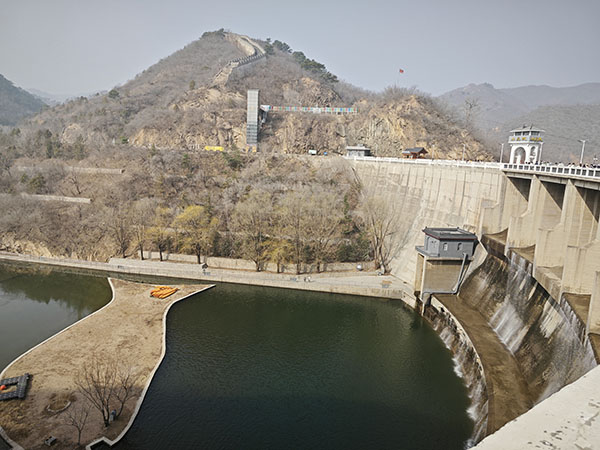Reservoir on the river. Riverine dissolved organic carbon is one of the carbon species transported in rivers.(Image by YOU Yanbin)
A collaborative research team led by the Institute of Atmospheric Physics at the Chinese Academy of Sciences has made significant strides in this area by developing innovative models that account for both soil and riverine DOC dynamics, as well as the influence of anthropogenic water regulation activities. These models have been successfully integrated into the land surface model CLM5.0.
PhD candidate YOU Yanbin from the Institute of Atmospheric Physics at the Chinese Academy of Sciences, the first author of the study, explains, "We conducted three sets of numerical simulations from 1981 to 2013 on a global scale using our developed model to investigate the effects of anthropogenic water regulation on riverine DOC transport."
The findings of this research indicate that, in the majority of cases, the transport of DOC in rivers is predominantly influenced by surface water regulation. Professor XIE Zhenghui notes, "The influence of human water regulation on riverine DOC exports has exhibited a steady increase over the years."
In addition, the most significant impact of anthropogenic water regulation activities has been concentrated within the region spanning from 23.5°N to 66°N, owing to its pronounced prevalence of human water usage.
Professor JIA Binghao adds, "Our innovative scheme for simulating DOC exports from terrestrial to aquatic systems is pivotal in accurately estimating global carbon budgets."
Reference:
You, Y., Xie, Z., Jia, B., Wang, Y., Wang, L., Li, R., Yan, H., Tian, Y., and Chen, S.: Impacts of anthropogenic water regulation on global riverine dissolved organic carbon transport, Earth Syst. Dynam., 14, 897–914, https://doi.org/10.5194/esd-14-897-2023, 2023.

